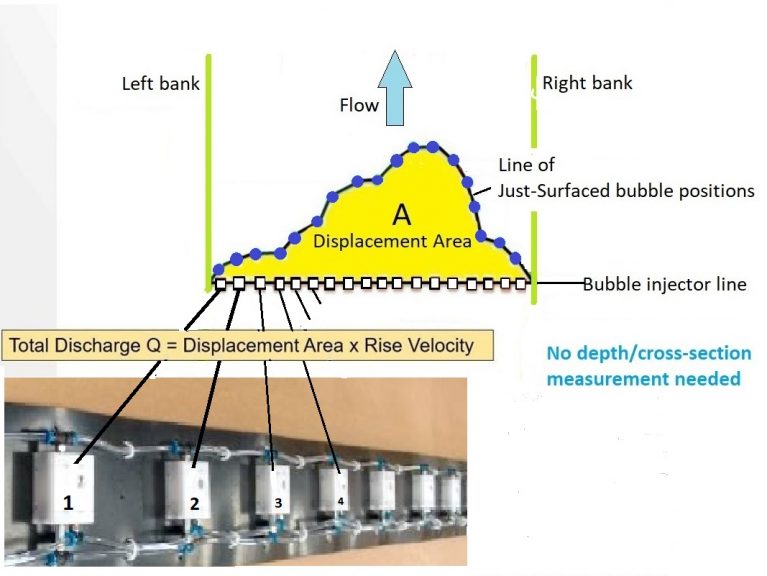Presented at NZ Hydrological Society Technical Workshop 17-20 March 2020
Abstract
Now, using the newly developed Rising Bubble Method (RBM) Tool, we can reliably, accurately, directly and continuously measure Total Discharge (Q) and depth-integrated velocity in ‘difficult’ lowland streams. The RBM Tool is most useful during low flow conditions when ecosystems are most vulnerable and when water restrictions have the highest economic impact. It should also be useful for determining surface/groundwater interaction along a stream and validating other instruments.
RBM can shift the paradigm and enable us to measure flows ‘where we need to’ (leading to impactful information), not just ‘where we can’. Q is essential for the calculation of nutrient loads so that streams can be better managed. RBM has the potential to solve the problem of low velocity measurements. This can lead to direct attribution of human impacts at a paddock scale.
In RBM air bubbles are released from a stream bed. These intrinsically integrate the downstream water displacement, resolving infinitesimally small changes, including negative ones, as they rise to the surface. The horizontal displacement distances (measured on the surface), from a line of bubble injectors to where the bubbles first break the water surface (‘just-surfaced’ location), are directly proportional to discharge.

RBM provides simple, direct measurement of Q and is more ‘transparent’ than conventional methods. For example: no surrogate relationships are needed (e.g., acoustic-to-flow), no empirical ratings are needed (e.g., depth-to-flow) and no assumptions are needed (e.g., ISO vertical velocity distribution). Importantly, RBM uses fundamental units – distance and time – therefore it is easy to verify the method and to quantify its uncertainty.
RBM is insensitive to errors in orientation and works best in low-gradient streams with an unbroken water surface. RBM is independent of channel topography, accommodates moderate turbulence and growth and die back of aquatic vegetation. Its strength is in stream types where conventional stage to flow methods fail. It can complement existing monitoring methods, filling the spatial gaps in our monitoring networks, rather than replacing conventional technology that already works well. For these ‘difficult to gauge’ streams it will reduce the cost-per-measurement, enable measurement where measurements were previously not practical, and hence increase the value of stream flow information and ‘downstream’ benefits to national water management.
Because it is not humanly possible to visually identify the ‘just-surfaced’ location of a line of 20 bubbles, injected across the stream in real time, we capture this with video and calculate Q directly, from the distance each bubble has been displaced from its origin. A single value for Q can be calculated manually by stepping through video frames, locating the ‘just-surfaced’ position by eye, measuring the displacement on screen, then scaling to give true displacement. It has also been automated by replacing the human in the manual calculation with Artificial Intelligence.
While not yet a ‘fully-polished’ tool the RBM Tool is functional. Any further development would benefit from collaboration with uptake and input from Councils and other potential end users.
The presentation will cover how RBM works and the results and conclusions from field trials.
Author bio
 Jeremy Bulleid is a Principal Technician currently employed by the National Institute of Water and Atmospheric Research (NIWA), working in the Christchurch-based Instrument Systems Group.
Jeremy Bulleid is a Principal Technician currently employed by the National Institute of Water and Atmospheric Research (NIWA), working in the Christchurch-based Instrument Systems Group.
His most recent work has involved applying technology to enhance science research, and reach, through innovations in environmental monitoring. Skills include design and development of technological solutions, the application of machine learning to solve environmental problems, writing technical publications and improving processes that support robust and defensible science.
Presentation
To watch the video, you will need your AHA member password sent to members by email

